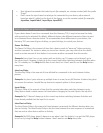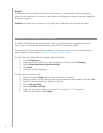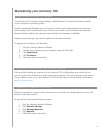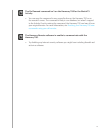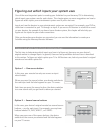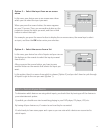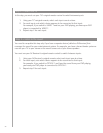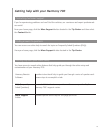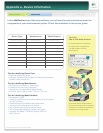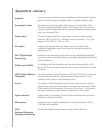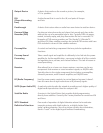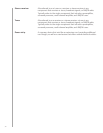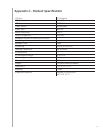
32
Appendix B - Glossary
Amplifier
Anamorphic views
Aspect ratio
A/V switch
DLP® (Digital Light
Processing)
DVD recorder (DVR)
HDTV (High Definition
Television)
In sync
Light controller
Mini-system
NTSC
(National Television
System(s) Committee)
A stereo component that outputs to speakers, and increases the gain or
level of an audio signal. An amplifier doesn’t typically include a radio.
Also referred to as Enhanced for Widescreen, or Enhanced for 16:9.
The process that horizontally shrinks a 16:9 image into a 4:3 space to
convert images between widescreen and typical television image aspect
ratio. Used on many DVDs.
The ratio of image width to image height. Common motion-picture
ratios are 1.85:1 and 2.35:1. Television screens are usually 1.33:1 (also
known as 4:3). HDTV is 1.78:1, or 16:9.
A device with several audio and video source inputs that sends
a selected audio/video source input signal to an output device like
speakers or a TV.
Projector screen technology that relies on using individually controlled
tiny mirrors (micro mirrors) to produce an image. Developed originally by
Texas Instruments.
A standalone unit that resembles and functions very much like a VCR.
Like a VCR, DVD recorders all have AV source inputs, as well it can record
TV shows.
The high-resolution form of television. HDTV has 1125 lines of resolution,
or more than five times the video information than that of a TV set,
creating a much crisper, more detailed picture.
The Harmony 700 knows what state all of your devices are in, such as
whether they are on or off and which inputs they were last using. When
it loses track of this information, it becomes “out of sync”. Your remote
can send commands to your devices to become “in sync” again.
A device that is connected to a set of lights and allows the lights to be
powered or dimmed remotely.
A single unit that is some combination of the functionality of a DVD,
VCR, radio, and amplifier.
The standard video broadcast format used in North America.



